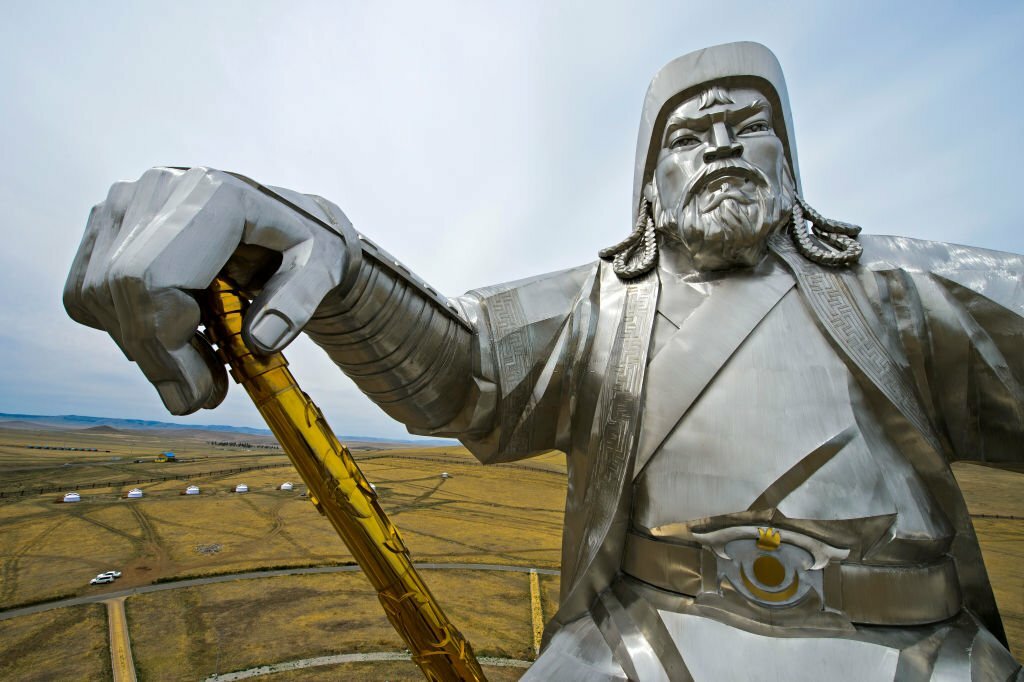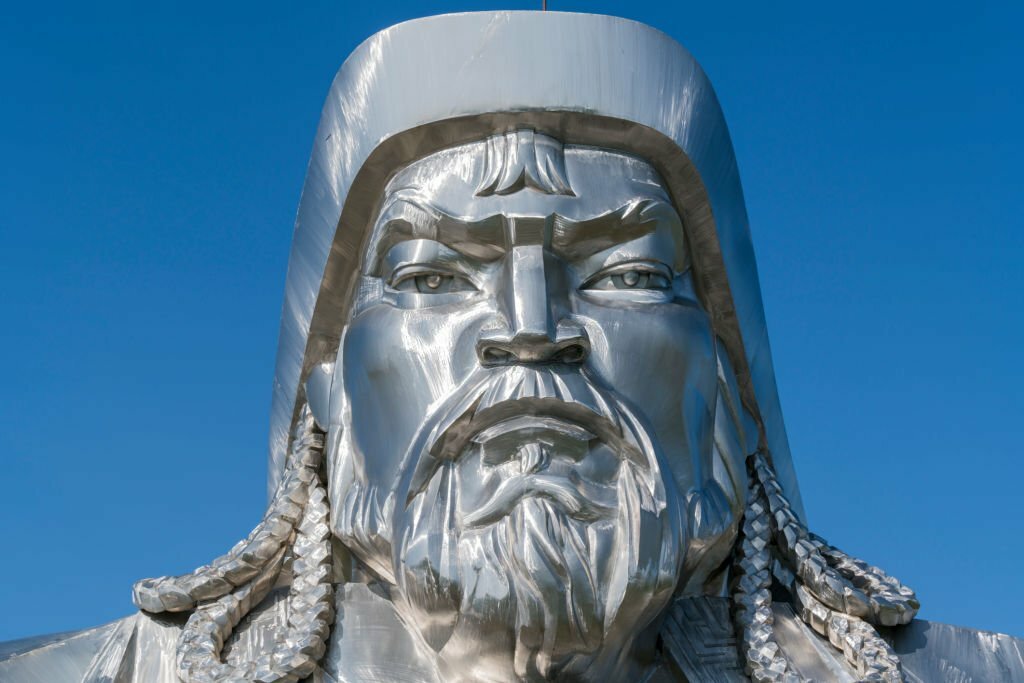Table of Contents
Genghis Khan, the founder of the Mongol Empire and one of history’s most iconic figures, is known for his military conquests and the empire he built. However, his physical appearance—especially his height—remains a subject of debate and intrigue. With historical sources offering varying descriptions and modern science offering new insights, we delve into the mystery of how tall Genghis Khan might have been.
The Challenge of Historical Evidence
Unfortunately, precise information about Genghis Khan’s height is not available, primarily due to the nature of the historical records from his era. Records from the 13th century focus more on his accomplishments and military exploits, leaving little room for details about his physical attributes. Moreover, many of these sources were written by individuals who never met Genghis Khan in person.
Key Historical Sources
- The Secret History of the Mongols (circa 1240): While it is one of the oldest surviving Mongolian texts, it does not provide an exact height measurement for Genghis Khan.
- Rashid al-Din’s Chronicles (14th century): This Persian historian described Genghis Khan as “tall and strong,” with notable facial features, like a long beard, suggesting a robust build.
- Chinese Imperial Records: These documents described Genghis Khan as “tall,” relative to the average height of the time, but specific measurements were not given.
- Zhao Hong’s Records: A Chinese diplomat noted that Genghis Khan had “a broad brow and long beard,” pointing to a man of commanding physical presence.
As historian Jack Weatherford noted in his book “Genghis Khan and the Making of the Modern World”, it remains difficult to separate the myth from the reality of Genghis Khan’s appearance.
Scientific Insights on Genghis Khan’s Height
Average Height of Medieval Mongolians
Recent archaeological studies of 12th- and 13th-century Mongolian burial sites suggest that the average height of men during this time was about 166-168 cm (5’5″ to 5’6″). This is slightly taller than some East Asian populations of the time, yet still considered moderate by contemporary standards.
Genetic Insights and Modern Analysis
While genetic studies of Genghis Khan’s descendants don’t offer direct evidence of his height, they reveal his extraordinary genetic legacy. Approximately 8% of men in Central Asia carry a Y-chromosome lineage traced back to him. Based on current scientific understanding, it’s likely that Genghis Khan stood around 168-175 cm (5’6″ to 5’9″), making him average to slightly above average in height for his time.
The Physical Demands of Nomadic Life
Genghis Khan’s physical attributes were likely shaped by the rigorous demands of a nomadic, warrior culture:
- Horseback Riding: The Mongol way of life revolved around horsemanship. A height much taller than 5’9″ would have been disadvantageous for mounted archery, a key aspect of Mongol warfare.
- Combat and Strength: Descriptions from The Secret History of the Mongols highlight Genghis Khan’s exceptional strength, with one famous account mentioning his ability to bend a bow with his hands alone.
- Survival on the Steppe: The harsh Mongolian environment would have required resilience and physical toughness, traits that likely contributed to his powerful build.
Recent archaeological discoveries in 2024-2025 from Genghis Khan’s campaigns also suggest weapons and armor tailored to warriors of moderate height and considerable strength.

Cultural Representations and Artistic Depictions
Throughout history, depictions of Genghis Khan have varied greatly, reflecting the cultural and political agendas of the artists rather than his actual appearance.
Historical Portraits
No authentic portraits of Genghis Khan made during his lifetime survive today. The earliest depictions were created posthumously, particularly by his grandson Kublai Khan, which makes it challenging to determine an accurate representation.
Moreover, Genghis Khan’s strict ban on artistic depictions during his reign likely explains the lack of contemporary images of him. This further complicates modern efforts to visualize his physical appearance.
Modern Interpretations
In modern Mongolia, Genghis Khan is often portrayed as a figure of towering stature, reflecting his immense historical and cultural significance. For example, the 131-foot stainless steel equestrian statue at Tsonjin Boldog, erected in 2008, symbolizes his strength and leadership, rather than a literal representation of his physical height.
Also Read: Khali wife height, Weight, Wiki, Biography, Age, Husband, Family, Net Worth, Career
Genghis Khan’s Legacy in Mongolia Today
The question of Genghis Khan’s height transcends mere curiosity—it is linked to his enduring significance in contemporary Mongolia. Recent surveys (2024-2025) show that over 90% of Mongolians view him as a national icon and a foundational figure.
Key Reasons for His Continued Relevance in Mongolia
- Founding Father: Genghis Khan is seen as the visionary who unified the Mongolian tribes.
- Cultural Icon: His influence pervades Mongolian traditions, art, and literature.
- Military Genius: His strategies are studied globally, and his military prowess is unmatched.
- National Unity: His success in unifying disparate tribes is a symbol of Mongolia’s strength.
- Legal and Economic Reformer: His establishment of the Yassa (a legal code) promoted justice and religious tolerance, while his policies helped foster international trade.
- Global Recognition: Today, Genghis Khan’s legacy is celebrated around the world, and he remains a figure of immense historical importance.
Final Thoughts: The Man Behind the Myth
While the exact height of Genghis Khan remains elusive, the latest historical and scientific evidence points to a man of average to slightly above-average height for his time, likely ranging from 168 to 175 cm (5’6″ to 5’9″). More important than his physical stature, however, is the towering impact he had on history. His leadership, military genius, and creation of one of the world’s largest empires have left an indelible mark on global history.
As Timothy May observed in “The Mongol Empire: A New History” (2024), “Genghis Khan’s legacy far exceeds any physical attribute. His accomplishments in governance, military strategy, and cultural unification fundamentally reshaped Eurasian history.”
Genghis Khan’s true stature lies in his legacy—a towering figure not in height, but in the lasting impact he left on the world.
People Also Ask
Q: Was Genghis Khan tall or short?
A: Genghis Khan was likely of average to slightly above-average height for his time, estimated between 168-175 cm (5’6″ to 5’9″). Some historical sources describe him as “tall” compared to the average height of the 13th century.
Q: How tall were ancient Mongolians?
A: Archaeological evidence suggests the average height of Mongolian men in the 12th-13th centuries was approximately 166-168 cm (5’5″ to 5’6″).
Q: Was Genghis Khan physically strong?
A: Yes, historical accounts describe Genghis Khan as physically powerful, able to bend a bow with his hands and possessing extraordinary endurance and combat skills.
Q: Did Genghis Khan have 1,000 children?
A: No, Genghis Khan is not likely to have had 1,000 children. He had four legitimate sons and several daughters. His descendants, however, spread widely, with his genetic legacy found in 8% of men in Central Asia.




